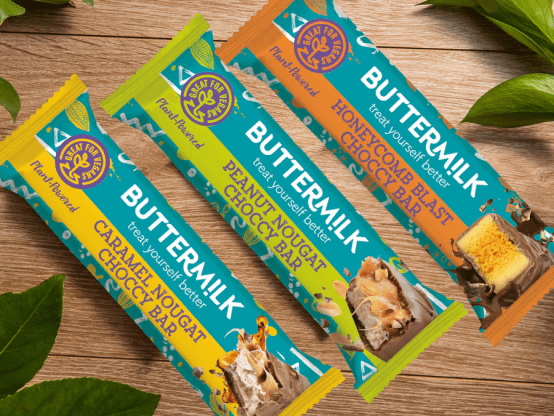Complete Guide: Vegan and Dairy Free Chocolate

Everyone loves chocolate. But not everyone can enjoy all chocolate. If you’re one of these people, indulging in a sweet treat becomes an involved exercise in checking labels, symbols and ingredients lists. Are you after dairy free chocolate? Vegan chocolate? Can you only eat lactose free chocolate, or actually just fancy plant-based chocolate? It can be a minefield. So what’s the difference between Vegan and Dairy Free chocolate?
Well, get ready to pin this post as you might want to take to the shops. We’re going to take you through each of these claims and what they each mean.
Vegan and Plant-Based Chocolates
Firstly, Vegan and Plant-Based Chocolates. You can make these products using only plant based ingredients. Vegan products don’t include anything derived from an animal. As a result, these products could still display a “may contain dairy” statement because there is no guarantee that they haven’t been contaminated by dairy. It doesn’t mean that dairy has or hasn’t been added to these products, just that they share production lines with other products that do.
As these terms are not regulated by any governing agency, producers have two options:
- Design their own vegan label to indicate which of their products are vegan.
- Get their products certified by one of the 17 international vegan labels, which have different guidelines for what is required of a product in order for it to be certified.
Lactose Free Chocolates
Secondly, Lactose Free Chocolate indicates that a product does not contain lactose. Dairy free and vegan chocolates are naturally lactose free. But it’s very easy to remove lactose from dairy. In fact you can still use dairy to make lactose free chocolate! Lactose free products might need a “may contain” statement for this reason. You can have lactose free chocolate if you suffer from a lactose intolerance, but not if you suffer from a dairy allergy.
Dairy Free Chocolates
Finally, Dairy Free chocolate. This is a serious claim, for people who are allergic to dairy and specifically the casein protein. So we don’t use dairy in the actual chocolate, or the manufacturing area. Dairy Free is also a regulated term, so doesn‘t need to include a “may contain” statement. You need to look out for this label if you suffer from a dairy allergy.
How do I know what's for me?
Here at Buttermilk we have a separate Dairy Free manufacturing area in our kitchen. Our team wear different protective clothing and we have specific Dairy Free tempering machines, chillers and production lines and there’s no crossover. Our factory is regularly checked for the presence of casein (the protein that triggers a dairy allergy) and we also check when we release the finished product. This means we ensure that there is absolutely no cross contamination with our separate confectionery kitchen.
To explain all this on the finished box of treats that end up in the shops, we’ve created a series of roundels that appear on our treat yourself better lines. We hope it’s a clear way of showing important information quickly so you can get on with your shopping and enjoy your treats.
Casein and lactose presence is the difference between Vegan and Dairy Free chocolates
In short, the difference between Vegan and Dairy Free chocolate is that Vegan products might have been manufactured in an environment where dairy is also used. This means that Casein and / or Lactose could be present. So vegan products will still have a “may contain” labelling when there is an allergen that can occur through cross-contact in the production environment. Hence they are not safe for dairy allergy sufferers.
Dairy Free products are made in a controlled, separate environment where no casein is present, and are therefore ok for people with a dairy allergy.
Now, which one of our Dairy Free treats do you fancy?
PS, Thanks to Tristan New for co-writing this blog.





